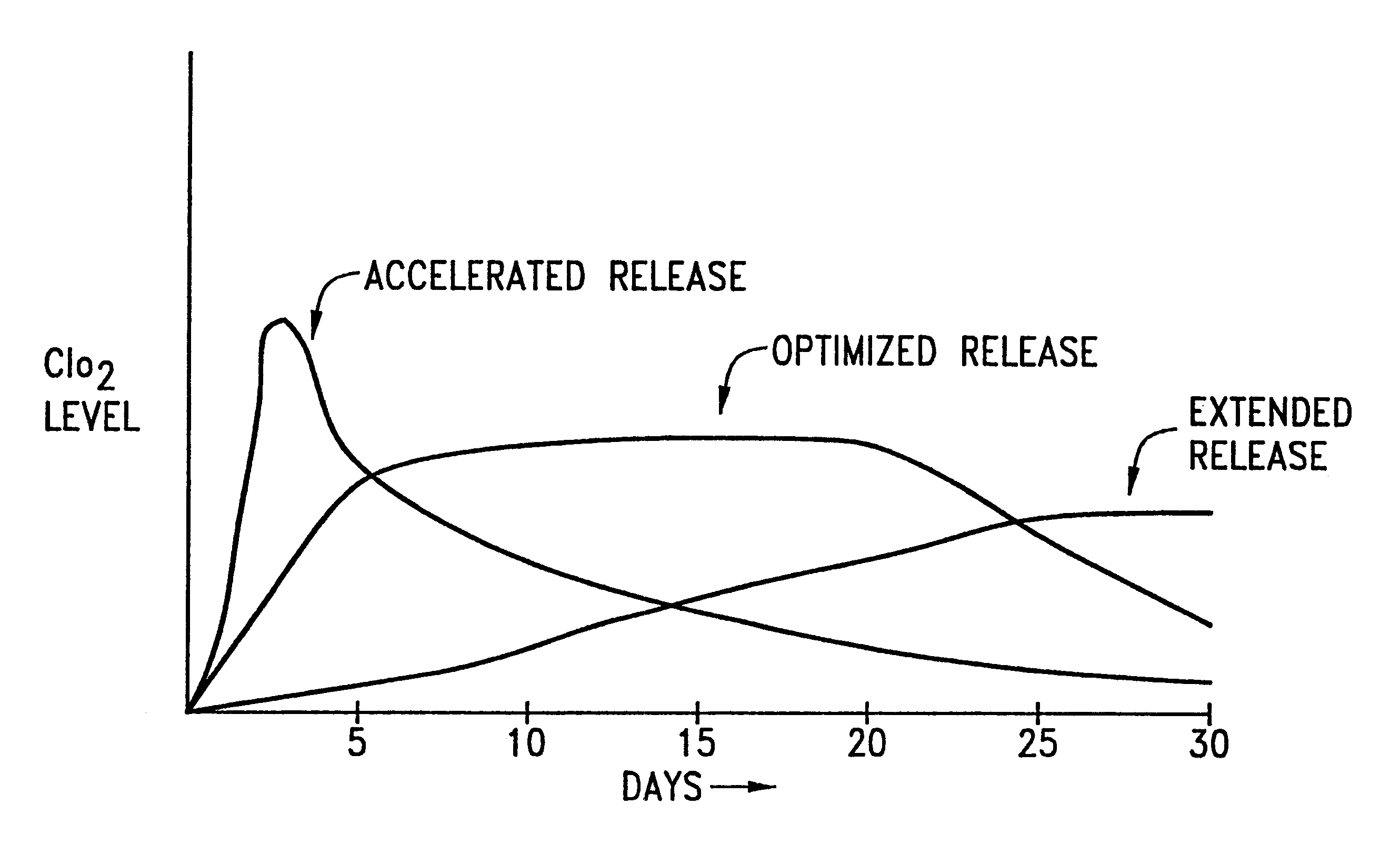Prevention of spoilage of produce using acidified expanded amorphous aluminum silicate impregnated with chlorite
a technology of expanded amorphous aluminum silicate and chlorite, which is applied in the direction of biocide, halogen oxide/oxyacid, other chemical processes, etc., can solve the problems of significant genetic or carcinogenic hazard to humans, slow release of clo.sub.2, and inability to work well over an extended period, etc., to facilitate disease management, prevent spoilage, and excellent deodorizing properties
- Summary
- Abstract
- Description
- Claims
- Application Information
AI Technical Summary
Benefits of technology
Problems solved by technology
Method used
Image
Examples
example 2
230 mL of 0.6M hydrochloric acid was sprayed on each of the 230 g of P1 and P2. These substances were sprayed with a generic spray bottle, with thorough stirring between every few sprays. The acidified EAAS was allowed to bake at 250.degree. C. for one hour. The EAAS turned slightly brown in color, which was possibly due to oxidation of Fe.sup.2+ to Fe.sup.3+.
Two bottles of each P1 and P2 were kept in three different locations for trials of odor removal. The results are reported in Tables 1 and 2. Samples A and B were kept in a toilet facility (100 sq. ft.), samples B and C were kept in the laboratory (1,600 sq. ft.), and sample E and F were kept in an office (1,500 sq. ft.).
TABLE 2
example 3
Mencaptoethanol is a fundamental molecule that is one cause for odors from rotten food substances. We tested the effect of our product in eliminating the odor caused by this chemical substance. 25.mu. of 1-mercaptoethanol (Aldrich) was tested by two PET jars of the type described above. In the first jar, a bottle containing 5 g of P1 was placed. The second control jar had no product placed in it. Lids sealed both jars. After 12 hours, the product bottle was taken out and the jars aired for 30 minutes. Subsequently, the jars were tested for mercaptan odor by 5 different individuals. None of them could detect any odor in the first jar, whereas the control-jar had a strong odor of mercaptan. The mechanism for the odor removal is believed to be the oxidation of the mercaptan by ClO.sub.2.
example 4
The product is very effective in removing onion odors. 25 g of chopped white onions were stored in two PET jars overnight. The onions were removed the next day and the bottle with P1 product was placed in one of the jars. After 12 hours, the jars were inspected for odor by 5 different individuals. It was agreed that the odor was eliminated from the jar that was treated with the P1 product.
PUM
| Property | Measurement | Unit |
|---|---|---|
| temperatures | aaaaa | aaaaa |
| temperature | aaaaa | aaaaa |
| temperature | aaaaa | aaaaa |
Abstract
Description
Claims
Application Information
 Login to View More
Login to View More - R&D
- Intellectual Property
- Life Sciences
- Materials
- Tech Scout
- Unparalleled Data Quality
- Higher Quality Content
- 60% Fewer Hallucinations
Browse by: Latest US Patents, China's latest patents, Technical Efficacy Thesaurus, Application Domain, Technology Topic, Popular Technical Reports.
© 2025 PatSnap. All rights reserved.Legal|Privacy policy|Modern Slavery Act Transparency Statement|Sitemap|About US| Contact US: help@patsnap.com

